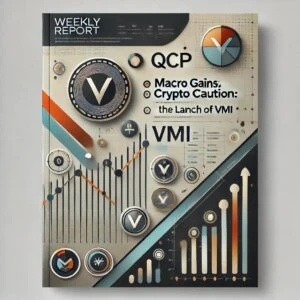Jul 10, 2024 12:25
Thecryptocurrency industry faced a barrage of security breaches in the secondquarter of 2024, with total losses reaching $629.7 million across 49 incidents,according to a new report from blockchain security firm Cyvers. Despite thestaggering figure, only 24% of stolen funds were recovered, highlighting thepersistent challenges in safeguarding digital assets.
Since thebeginning of the year, cryptocurrency criminals have seized over $1.38 billion, most of which resulted from "access control breaches."
Crypto Recovery EffortsFall Short as Losses Mount
The reportreveals a significant shift in attack vectors, with centralized exchanges (CEX)emerging as the primary targets. Two major incidents accounted for over 57% oftotal losses.
"Thedramatic 900% increase in CeFi losses compared to Q2 2023 signals a significantshift in attacker focus," Cyvers commented in the newest report."This trend may be attributed to the concentration of assets incentralized platforms and potentially lax security measures in someexchanges."
@Cointelegraph reports on the alarming rise in crypto losses in Q2 2024. "A 900% increase in losses on centralized exchanges was the main factor driving the surge in stolen funds." Total losses doubled compared to Q2 2023, reaching over $600 million. Read More: pic.twitter.com/Ck5nCDQfQe
Cyvers | Proactive Web3 Security (@Cyvers_)
July 9, 2024While thetotal amount recovered rose by 42% compared to the same period last year, from$138.9 million to $197 million, it represents less than a quarter of the totallosses.
Thismeans that barely one in four victims of cryptocurrency hacker attacks is ableto recover their funds. Considering that in the first half of 2024, scammersseized nearly $1.4 billion, this indicates that over $1 billion remained in thepockets of the fraudsters, who have remained unpunished.
A small consolation might be the fact that the total values seem to be lower than last year. According to the FBI's March report, in 2023, crypto fraudsters seized just under $4 billion.
Access Control BreachesDrive 35% Surge in Crypto Exploits
The reportalso highlights a notable change in hacker tactics, with a 35% increase inaccess control exploits. They refer to security incidents where attackers gainunauthorized access to systems, wallets, or accounts by exploiting weaknessesin authentication and authorization mechanisms.
Thesebreaches accounted for $491,311,000 in losses across 26 incidents, representinga substantial portion of the total $629,689,000 lost in Q2 2024. The DMMExchange hack, which resulted in a $305 million loss, was reportedly due to acompromised private key, exemplifying this trend.
ALERTWe hear reports that @DMM_Bitcoin, a major Japanese crypto #exchange, reports a loss of $305M in $BTC due to a hack.In the blog at https://t.co/1wD0fpsJEI DMM Bitcoin revealed 4,502.9 $BTC transferred out of the exchange.They've implemented measures to prevent further
Cyvers Alerts (@CyversAlerts)
May 31, 2024"Asthe ecosystem becomes more interconnected, security audits need to beconsidered for improved cross-chain interactions," the Cyvers reportadded.
Data from a report published by Cyvers align with statistics that blockchain security firm CertiK released last week. According to the report's findings, nearly $1.2 billion disappeared from the cryptocurrency market in the first six months. The only difference is that the report ranks phishing attacks first, not access control exploits.
The surgein attacks has far-reaching economic implications beyond the direct losses.Market volatility triggered by major incidents has wiped billions in marketcapitalization across the crypto ecosystem. Additionally, the frequency andscale of attacks have led to sharp increases in crypto insurance premiums,adding to the operational costs of Web3 projects.
The Web3ecosystem in Q2 2024 has faced substantial challenges from sophisticatedcyberattacks. Projects and organizations must implement robust securitymeasures, conduct continuous monitoring, and engage in proactive communityefforts, the report concluded.
This article was written by Damian Chmiel at www.financemagnates.com.



















